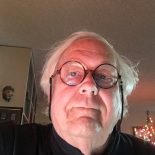Simanaitis Says
On cars, old, new and future; science & technology; vintage airplanes, computer flight simulation of them; Sherlockiana; our English language; travel; and other stuff
BESSIE COLEMAN—A COURAGEOUS WOMAN OF SOARING AMBITION PART 1
MORE THAN 100 years ago, a young woman heard about pioneer aviatrix Harriet Quimby and thought flying might be fun for her too. The young woman had two challenges: her gender and that she was African American/Native American, at a time when “colored” and “indian” were the accepted terms. Here in Parts 1 and 2 today and tomorrow are tidbits about this courageous woman.

A Sharecropper Kid. Bessie was the tenth of thirteen children born to George Coleman, whose grandparents were Cherokee, and Susan Coleman, who was Black. When Bessie was two, the family moved from Atlanta, Texas, to Waxahachie, Texas, where they were sharecroppers.
Her early education was in a segregated, one-room school, involving four miles of walking each day. Bessie learned to love reading and excelled in math, her schooling interrupted by family responsibilities of the cotton harvest.
At age 12, Bessie earned a scholarship to the Missionary Baptist Church School; at 18, she enrolled in the Oklahoma Colored Agricultural and Normal University in Langston, Oklahoma, (now Langston University). Alas, her money ran out in a year.
Chicago: A World Opens. In 1915, at age 23 Bessie followed her brothers in a move to Chicago. There, working as a manicurist, she learned of a larger world, of pilots returning from World War I and of Harriet Quimby, pioneer aviator.
The idea of aerial freedom attracted Bessie, and she took on a second job at a chili parlor to earn pilot money. This was to no avail because American flight schools were closed to women, let alone a colored woman.
Early on, though, Bessie recognized the power of the press. Robert S. Abbott had founded The Chicago Defender, an African-American newspaper, in 1905, and he took an interest in Bessie’s ambitions. Wisely, he advised her to pursue her aviation education in France.
Berlitz to Paris. Bessie began by enrolling in a Berlitz course in French. This language was the company’s first, established in 1878.
In November 20, 1920, Bessie traveled to Paris, in part with financial sponsorship from The Chicago Defender and also from Jesse Binga, who in 1908 had established the first privately owned African-American bank (at the time, coloreds were excluded by many banks).

Bessie’s Wings. On June 15, 1921, Bessie achieved her ambition of earning a pilot’s license. Indeed, she was the first African-American woman and the first Native American to do so anywhere in the world.

Indeed, her license was sanctioned by the Fédération Aéronautique Internationale, making her the first of her race to earn such international recognition.

Bessie continued her flight training in France under the guidance of a World War I ace. In September 1921, she returned to the U.S., where newspapers encouraged her ambition to become a barnstorming stunt pilot.
We’ll continue Bessie’s tale tomorrow in Part 2. ds
© Dennis Simanaitis, SimanaitisSays.com, 2020

For whatever reason, this photo makes me want to know this woman.
Always nice to hear from you!
>